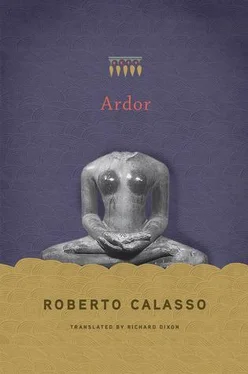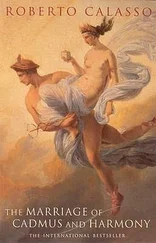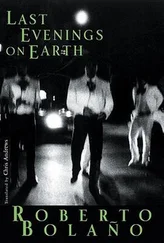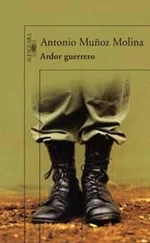* * *
However he was considered, Prajāpati always appeared unique. Even when the gods were counted: “There are eight Vasus, eleven Rudras, twelve Ādityas; and these two, Sky and Earth, are the thirty-second and thirty-third. And there are thirty-three gods and Prajāpati is the thirty-fourth.” Prajāpati’s supernumerary nature was his unfailing characteristic. Prajāpati was always extra —and it is precisely to this that the ritualists connected the link between surplus and residue. They saw that they were the same question. And the question was Prajāpati himself. Prajāpati is that which remains. Prajāpati is the superfluous part from which all that is necessary is born.
* * *
Surplus and residue are ever-present. Especially in time. The day that marks the climax of the year is the viṣuvat —and that is a surplus day. Without that day, the year would be divided into two equal parts, in which each rite could have its identical counterpart. But the viṣuvat places this perfect symmetry at risk. The question is: “‘Does the viṣuvat belong to the months that go before or those that follow?’ He must reply: ‘Both to those that go before and those that follow.’” Why? “Because the viṣuvat is the torso of the year and the months are its limbs.” And a body cannot do without its torso. And then again: the year is a great eagle. The first six months are one wing and the other six the other wing. And the viṣuvat is the body of the bird. That surplus day, the viṣuvat , is therefore indispensable: only this interval can keep time together, can enable it to spread out two perfectly symmetrical wings, that extra day alone gives completeness to the year, where the rites each occur in correspondence with their counterpart, in the first and in the second half. Only in that way, with the last ceremony (the stairway that is climbed emerging from the ocean of the rite) do we reach the “world of heaven, the place of quietness, of plenty.”
Having reached the end of this crucial demonstration, since the proper conduct of the whole liturgy depends upon it, the ritualist allows himself a meditative aside , serious in tone, almost a confession by someone who has spent his whole life carefully, steadfastly, examining this subject: “These are indeed the forests and the ravines of the sacrifice, and hundreds and hundreds of days are needed to travel them by chariot; and if anyone ventures into them without knowledge, then hunger or thirst, marauders and wicked demons will assail them, in the same way that wicked demons would attack fools who wander in a wild forest; but if they who know do so, they pass from one task to the other, as from one river to the other and from one safe place to the other, and they reach bliss, the world of heaven.” Then suddenly, as if he had become carried away for a moment in contemplating his life and all his past experience — and this was against the rule — the ritualist patiently returns to a technical detail of the liturgy, to preparing answers to those who are always asking pointless and captious questions about this and that.
* * *
“That is full, this is full. / Full gushes forth from fullness. / Even after the full has been fully drawn upon, / this full remains full.”
We encounter the “stanza of plenitude” at the beginning of the penultimate adhyāya of the Bṛhadāraṇyaka Upaniṣad. Paul Mus wrote a masterly commentary on it. But, as the words of the stanza say, what it describes is boundless. And it might be placed at the very center of Vedic thought — even if the word thought may, in this case, seem reductive. The closest proximity to full, pūrṇa , mentioned in the text is a passage in the Śatapatha Brāhmaṇa , which reads: “The gods certainly have a joyous Self; and this, true knowledge, belongs to the gods alone — and indeed whosoever knows this is not a man but one of the gods.” The real difference between gods and humans does not lie exclusively in the immortality that the gods have laboriously achieved — and which they want to keep only for themselves. It lies in a particular kind of knowledge, which corresponds to the joy gushing forth from the depths of Self. Ultimate knowledge is neither impassive nor immovable, but resembles the perpetual flow of plenitude in the world. The Vedic cult of knowledge is directed toward this image.
“When the yonder world overflows, all gods and all beings subsist on it, and truly the yonder world overflows for he who knows this.” All is possible — even the existence of the gods — only because “the yonder world” is superabundant. Its bursting forth into the other world, which is ours, offers that surplus without which there would be no life.
XIV. HERMITS IN THE FOREST

The saṃnyāsin , the “renouncer,” in whose traits Louis Dumont had the farsightedness to recognize the archetypal individual in the Western sense, is a figure who does not appear in the earliest stratum of the Vedic texts. The system, at that time, is compact and leaves no such space. Having once entered the process of cosmic interaction on birth, there is no way out. But on reaching the Upaniṣads, which take ritualist reasoning to an extreme, the saṃnyāsin makes his appearance — the first defector, not because he rejects the complex system of interaction on which ritual is based, but because he seeks to absorb it within himself, in the inaccessible space of the mind. So the agnihotra becomes the prāṇāgnihotra , the first case of the complete internalization of an event, an invisible ceremony that takes place in an individual’s “breath,” prāṇa. There is no longer any fire, there is no longer any milk to pour on it, the words of the texts are no longer to be heard. But all this still exists: in silence, in the activity of the mind. And so the inner man makes his first appearance in history. He is the “individual-outside-the-world,” who has severed his links with society — and who will eventually prove to be enormously effective in his action upon society. Dumont recognizes in him the earliest figure of the intellectual , right up to his most recent awkward or lethal manifestations.
* * *
The saṃnyāsin can quite properly be described as the inner man, since it is he who first internalized the sacrificial fires. Thanks to a subtle elaboration of correspondences, the factors that made up the liturgy of the Vedic sacrifice are moved into the body and into the mind of the saṃnyāsin ; and so he becomes the only being who need not keep fires burning, since he keeps them within himself. With the advent of the renouncer, sacrificial violence no longer leaves any visible traces. All is absorbed into this solitary, emaciated, wandering being, who would eventually become the very image of India. Not the man in his village or in his house. But the man of the forest — a place of secret learning, a place far removed from social constraints.
There is no mention of saṃnyāsins in the Ṛgveda. They hardly dominate the scene in the Brāhmaṇas, which are filled instead with the figures of mighty and forbidding brahmins like Yājñavalkya, virtuous warriors well practiced in dangerous disputations on brahman , the king’s counselors and rivals. But, once again, it is in the liturgical literature — particularly the Sūtras — that we find the answer to a vital question that is rarely asked: how did the saṃnyāsin first come into being?
Читать дальше













